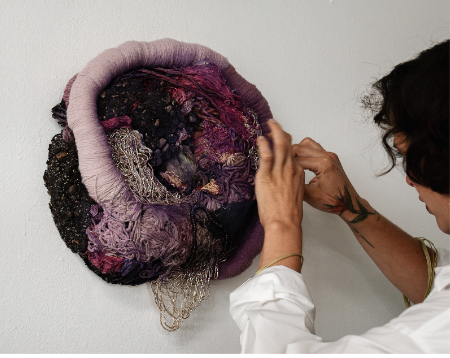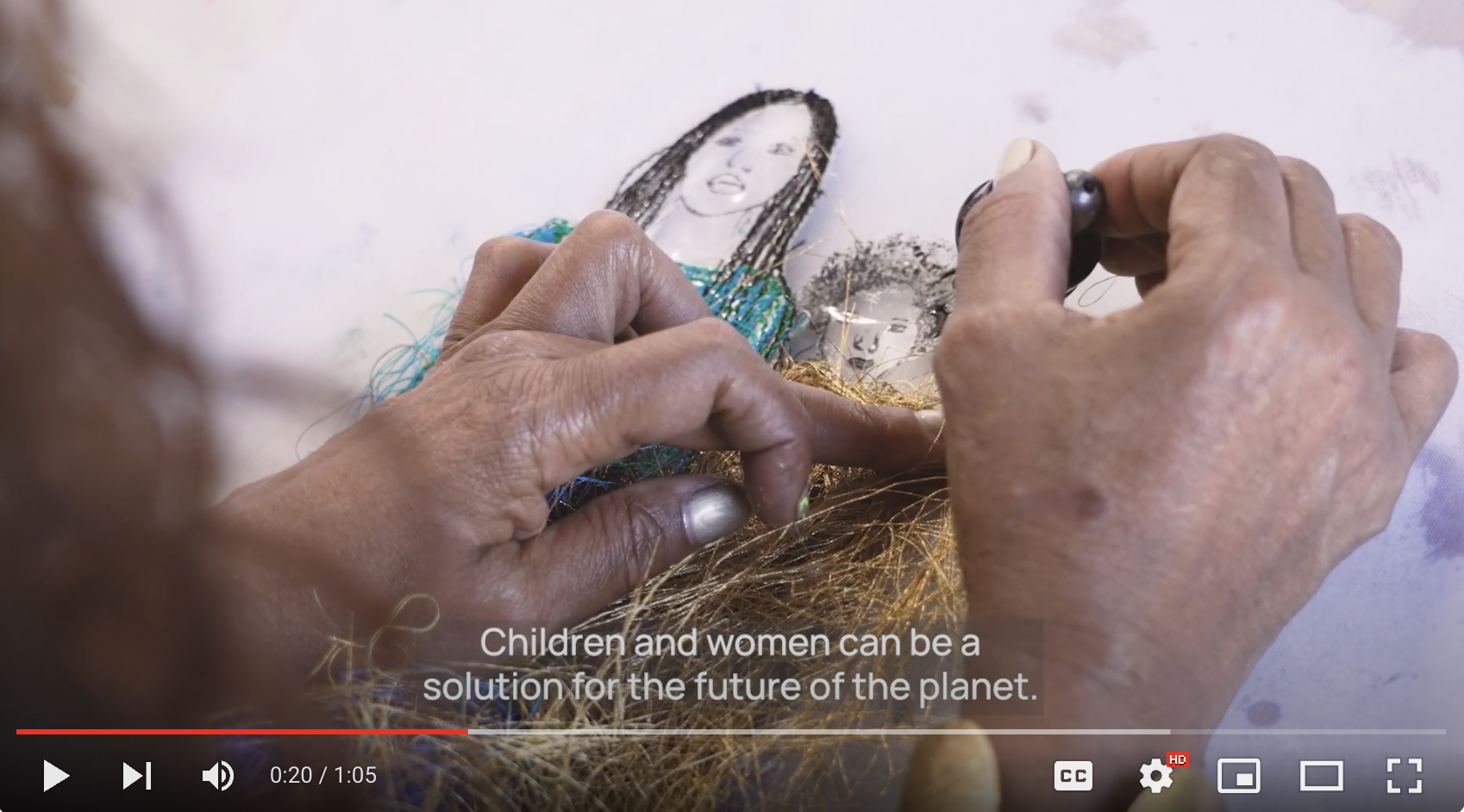June 2024
Daniela Gomez Paz
Film directed by Alexa Caravia for Fountainhead Arts
Can a story be embodied in a work of art? Daniela Gomez Paz is a threader of layered, intimate narratives. Her nest-to-human-scaled pieces, which she calls entanglements between sculpture, painting, and embroidery, play with the logical and the poetic, memory, and biology. Born in Cali, Colombia, Gomez Paz immigrated to Queens, NYC, when she was 8. “Weaving is a thinking framework and I feel it as a map or as an intricate diagram unraveling existence,” she says. The Argentine poet Alejandra Pizarnik wrote, “el cuerpo se acuerda de un amor, como encender la lampara.” ( the body remembers love/ a lover like lighting up a lamp). Gomez Paz’s entangled sculptures are also layered with different stories of home, questions about femininity, and migration that seem to light up, like a lamp, as the viewer approaches them.
The works created for her recent exhibition, “Corrientes enmarañadas / Streams of entanglements” (2024, NOON Projects) are fleshy and vivid, tender like open wounds, synthetic and organic, each layer disclosing a history of the body as a home for remembrances. “I work in different ways and all these processes connect by informing one an other, consisting of coiled forms, soil, found objects, and fibrous components,” she expressed. Her medium-scaled, square-shaped piece, Grietas en su Apoyo/ Light in the Dark (2023), appears like a skin biopsy sample open to the viewer. Tangled layers of cloth reveal different elements: dried sunflowers, vintage handkerchiefs, a basket, a small mold of the artist’s hand made of plaster and beeswax, and a used soft sweater. Here, Gomez Paz questions the categorical identity of femininity. “How can femininity be felt and communicated through color, motion, and tactility? How does the psyche construct its meaning within private and public terrains?” she asks. Another work displayed at Mindy Solomon Gallery in Miami, a blood-red large-scale dynamic installation Tesando Agujeros (2023), hangs from the ceiling and is is in a twisting position alluding to a DNA molecule. “Tesar means to tighten in Spanish,” Gomez Paz explains, and is indicative of how she crafted the work, coiling different red forms to mimic “blood clots, fiber, skin and muscle tissue, and the flowing of menstruation blood,” she adds, while also giving up control of its final form, and letting each thread pull and depend on the other.
Her June residency in Miami allowed the artist to focus on reflection rather than production. She experimented with materials and pondered on topics such as light, weight, and gravity. But Florida will only let you get away if you don’t consider what is happening to its climate. After one of the many summer storms had passed, flooding part of her studio garage, Gomez Paz thought about the permeability of color across different reflective surfaces, including water. “I had this textile work in process and its color reflected on the water with all the debris and other objects that flooded my studio floor. It was a crucial reminder of the climate conditions we live in. The water also felt like a mirror, a moment of looking into nature as also a way of looking into ourselves,” she added.
Words by Carolina Drake






Daniela Gomez Paz
Explore More Films









